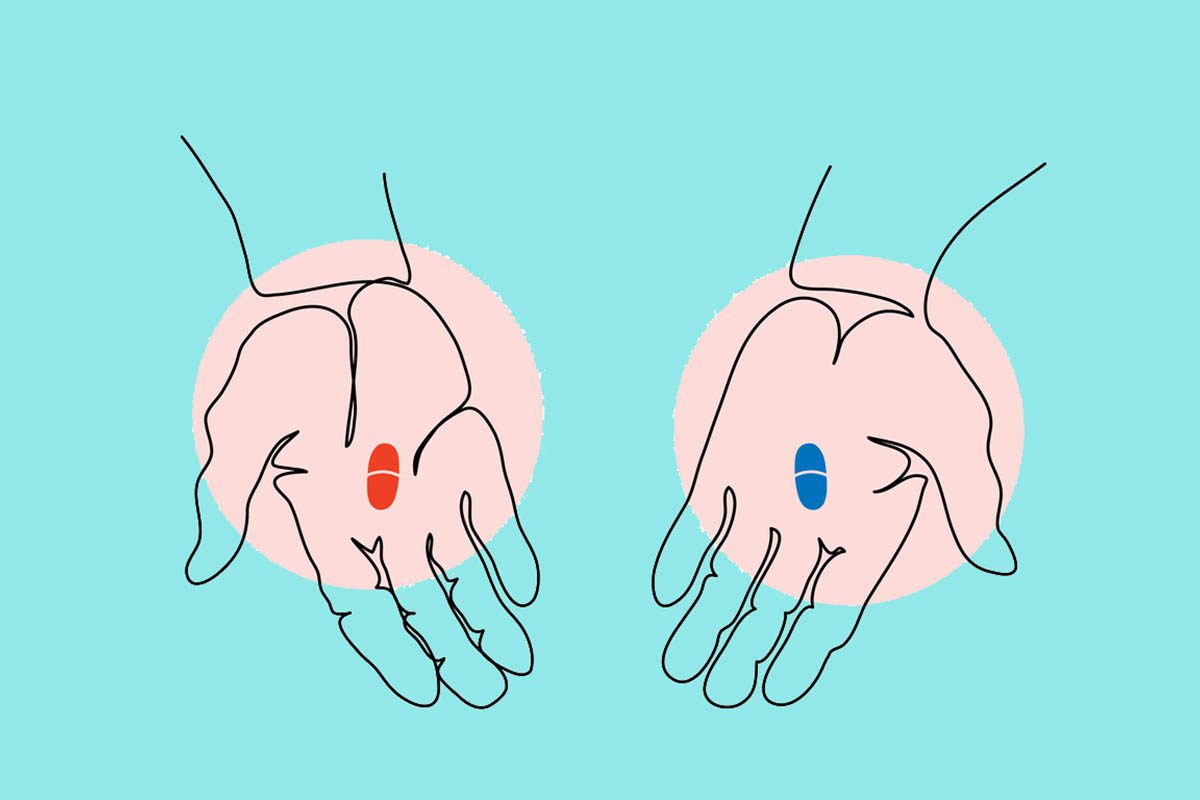
American Society of Clinical Psychopharmacology Corner
J Craig Nelson MD, Editor
New Antipsychotic Drugs:
How Do Their Receptor-Binding Profiles Compare?
While in the 1990s the US Food and Drug Administration (FDA) approved 5 new antipsychotics, only 4 were approved in the subsequent decade. Three of the 4 were approved for use just in the last 4 years. These 3 drugs—paliperidone (approved in December 2006), iloperidone (approved in May 2009), and asenapine (approved in August 2009)—are the subject of this brief review. All of these drugs, along with the prototypical drug clozapine, marketed in 1989 in the United States, as well as several other marketed antipsychotic drugs, are considered atypical antipsychotics, defined at least initially as an antipsychotic drug that lacks motor (extrapyramidal) side effects. Pharmacodynamic mechanisms that confer atypicality to a neuroleptic are reviewed elsewhere.1
Interestingly, all 3 of these newly marketed compounds are actually old drugs. Paliperidone is an active metabolite of risperidone, which was released in 1994. It has a longer elimination half-life and some distinctive differences in its receptor binding profile compared to that of its parent compound.2 Thus, millions of patients for many years have been indirectly treated with this medication. The other 2 drugs are truly decades-old compounds. In 1990, the pharmaceutical company Hoechst-Roussel (now Sanofi-Aventis after mergers and acquisitions) received a US Patent to iloperidone, while asenapine, formerly ORG5 222 from Organon Pharmaceuticals (now part of Merck & Co, Inc), was first reported in the scientific literature in the same year.
Like the older drugs, the new antipsychotics are antagonists of several different neurotransmitter receptors. Some of this antagonism may relate to therapeutic properties, including atypicality, and some may relate to adverse effects (Table 1). Thus, the affinity of a neuroleptic (a measure of how tightly it binds to that receptor and has the units of molarity−1) for a particular receptor may be predictive of the likelihood that the drug will cause certain unwanted effects in patients. The higher the affinity of a drug, the more likely it is to cause these problem, unless there is a mitigating influence from blockade of another receptor related to a particular adverse effect (eg, blockade of serotonin 5-HT2A receptors mitigating extrapyramidal effects of dopamine D2 receptor blockage).
Blockade of Dopamine D2 Receptors
In vitro binding affinity of antipsychotics for dopamine D2 receptors predicts efficacy, daily dosage, and likelihood of causing extrapyramidal side effects.3-5 This relationship is supported by in vivo radioligand binding studies with positron emission tomography.6-9 Although dopamine D2 receptor occupancy is related to therapeutic effects and extrapyramidal side effects, blockade of serotonin 5-HT2A receptors with high affinity, in addition, mitigates against the extrapyramidal side effects of antipsychotics.10-12 However, serotonin 5-HT2A receptor blockade may not be important for the therapeutic effects of antipsychotic drugs.9 It should be noted that all of these new drugs are effective in schizophrenia and, to date, differences in efficacy among these agents have not been shown.
All of the featured antipsychotic drugs are potent and relatively similar with respect to their affinities for dopamine D2 receptors (Table 2). High affinity at blocking the dopamine D2 receptors can lead to motor side effects and endocrine problems (Table 1).
Elevated serum levels of prolactin, which result from neuroleptic blockade of the dopamine receptors in the pituitary, can subsequently cause galactorrhea, menstrual changes, and sexual dysfunction in males (impotence).13 The extrapyramidal side effects of antipsychotics can be divided into those of early onset (acute dyskinesia, akathisia, and parkinsonism) and late onset (tardive dyskinesia). The early-onset problems occur within the first 10 weeks of therapy and are always reversible. The only relatively common late-onset extrapyramidal side effect is tardive dyskinesia, which is by definition caused by antipsychotics and is not always reversible. Tardive dyskinesia is characterized by abnormal involuntary, persistent movements of the tongue, lips, and facial, and sometimes trunk, muscles. The available data suggest that antipsychotics with low affinity for the dopamine D2 receptor (or high affinity for the 5-HT2A or muscarinic M1 receptor) will have low propensity to cause these extrapyramidal problems.
Blockade of α-Adrenoceptors
Of the 2 major subclassifications of α-adrenergic receptors, α1 and α2, α1-adrenoceptor blockade is more relevant clinically (Table 1); therefore, no data are presented for α2-adrenoceptor blockade. However, it has been suggested that blockade of the α2-subtype with high affinity confers atypical properties on a neuroleptic.14 The data in Table 2 suggest that in clinical practice iloperidone and asenapine will very likely cause significant blockade at the α1-adrenoceptor. This may cause postural hypotension, dizziness, and a reflex form of tachycardia (Table 1). In fact, iloperidone is so likely to cause hypotension that it requires a very slow, twice per day titration over 7 days to a maximum dosage. This would preclude its use for rapid "neuroleptization." When these side effects become very bothersome and tolerance to these effects does not occur, then the patient should be given a trial with a drug with lower affinity at the α1-adrenoceptor (eg, paliperidone in this group of new compounds, although the older drug olanzapine has even lower affinity for this receptor).
Blockade of Histamine H1 Receptors
Antipsychotic drugs also antagonize the histamine H1 receptor. Histamine is an important neurotransmitter in brain, where through the histamine H1 receptor it is a key regulator in the control of the sleep-wake cycle and of appetite. Outside the brain, this receptor is the site of action of antihistamines used to treat allergies. Olanzapine is one of the most potent histamine H1 antagonists of class of drugs. From our data, olanzapine is more than 150-fold more potent at histamine H1 antagonism than is the classical antihistamine diphenhydramine. The antihistaminic (H1) property of these drugs very likely relates to their ability to cause sedation and drowsiness. Because sedation is the most common side effect of histamine H1 antagonists, they are used clinically as sedative-hypnotics. In addition, antipsychotics with high affinity for the histamine H1 receptor will potentiate the actions of central depressant drugs, which also cause sedation and drowsiness (in most cases by other mechanisms). Finally, histamine H1-receptor blockade by antipsychotic drugs and other compounds may play a role in the appetite-stimulating effects of these compounds.15 A switch to a drug that is less potent as an antihistamine may alleviate this problem.
Blockade of Muscarinic Acetylcholine Receptors
The vast majority of acetylcholine receptors are muscarinic in brain, where they are involved with memory and motor functions, among other things. In the periphery, some important functions of this receptor are the control of gastrointestinal motility and micturition. Olanzapine is the only drug in this group (Table 2) with appreciable antimuscarinic activity. This activity may result in several different types of side effects (Table 1), most of which are problematic in the elderly.
Summary
Data presented here should allow the physician to anticipate certain adverse effects and drug interactions of 3 newly marketed antipsychotic drugs. Thus, clinicians are given a rational basis for understanding these unwanted effects and for selecting antipsychotics to minimize these effects in their patients.
Author affiliations: Departments of Psychiatry and Pharmacology, Mayo Clinic, Jacksonville, Florida. Potential conflicts of interest: Dr Richelson has received grant/research support from Ortho-McNeil Janssen. Funding/support: The writing of this review was supported by the Mayo Foundation for Medical Education and Research. Corresponding author: Elliott Richelson, MD, Mayo Clinic, 4500 San Pablo Rd, Jacksonville, FL 32224 ([email protected]).
REFERENCES
1. Richelson E. J Clin Psychiatry. 1999;60(suppl 10):5-14. PubMed
2. Richelson E, Souder T. Life Sci. 2000;68(1):29-39. PubMed doi:10.1016/S0024-3205(00)00911-5
3. Creese I, Burt DR, Snyder SH. Science. 1976;192(4238):481-483. PubMed doi:10.1126/science.3854
4. Seeman P, Lee T, Chau-Wong M, et al. Nature. 1976;261(5562):717-719. PubMed doi:10.1038/261717a0
5. Richelson E. J Clin Psychiatry. 1984;45(8):331-336. PubMed
6. Farde L, Nordström AL, Wiesel FA, et al. Arch Gen Psychiatry. 1992;49(7):538-544. PubMed
7. Nyberg S, Nakashima Y, Nordström AL, et al. Br J Psychiatry suppl. 1996;(29):40-44. PubMed
8. Wadenberg ML, Soliman A, VanderSpek SC, et al. Neuropsychopharmacology. 2001;25(5):633-641. PubMed doi:10.1016/S0893-133X(01)00261-5
9. Stone JM, Davis JM, Leucht S, et al. Schizophr Bull. 2009;35(4):789-797. PubMed doi:10.1093/schbul/sbn009
10. Ceulemans DL, Gelders YG, Hoppenbrouwers ML, et al. Psychopharmacology (Berl). 1985;85(3):329-332. PubMed doi:10.1007/BF00428197
11. Bersani G, Grispini A, Marini S, et al. Cur Ther Res. 1986;40:492-499.
12. Meltzer HY, Matsubara S, Lee JC. J Pharmacol Exp Ther. 1989;251(1):238-246. PubMed
13. Buvat J, Lemaire A, Buvat-Herbaut M, et al. Horm Res. 1985;22(3):196-203. PubMed doi:10.1159/000180094
14. Nutt DJ, Lalies MD, Lione LA, et al. J Psychopharmacol. 1997;11(2):163-168. PubMed doi:10.1177/026988119701100209
15. Wirshing DA, Wirshing WC, Kysar L, et al. J Clin Psychiatry. 1999;60(6):358-363. PubMed
doi:10.4088/JCP.10ac06470yel
© Copyright 2010 Physicians Postgraduate Press, Inc.
ASCP Corner offerings are not peer reviewed by the Journal but are peer reviewed by the ASCP. The information contained herein represents the opinion of the author.
Visit the Society Web site at www.ascpp.org






